 Last additions - OKINAWA ISLAND 沖縄本島 Last additions - OKINAWA ISLAND 沖縄本島 |
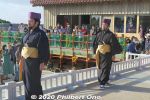
They first appeared in front of the Yohokoriden and posed for photos. Led by the King and Queen's attendants.Feb 05, 2021
|
|
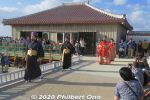
Shuri Castle holds the annual Shurijo Castle Festival on days centering on Nov. 3, a national holiday for Culture Day. The royal court made a few appearances at the castle on Nov. 3, 2020. Feb 05, 2021
|
|
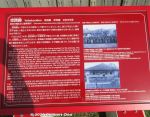
About the Yohokoriden.Feb 05, 2021
|
|
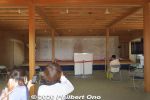
Yohokoriden is now a rest house for visitors with vending machines for soft drinks. There's a large video screen showing scenes of Shurijo Castle.Feb 05, 2021
|
|
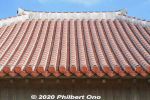
Yohokoriden roof. Totally unscathed from the Seiden fire.Feb 05, 2021
|
|

YohokoridenFeb 05, 2021
|
|
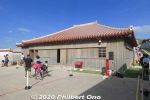
Reconstructed Queen's Quarters (世誇殿) called Yohokoriden.Feb 05, 2021
|
|
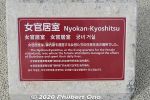
About Nyokan Kyoshitsu. 女官居室(にょかんきょしつ)Feb 05, 2021
|
|
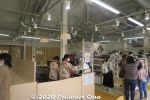
Inside Nyokan Kyoshitsu, now a gift shop. 女官居室(にょかんきょしつ)Feb 05, 2021
|
|
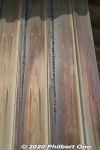
Nyokan Kyoshitsu's right corner scorched from the burning Seiden.Feb 05, 2021
|
|
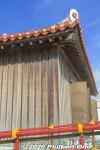
Nyokan Kyoshitsu's right corner scorched from the burning Seiden.Feb 05, 2021
|
|
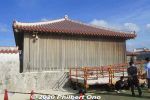
Nyokan Kyoshitsu's right corner scorched from the burning Seiden. 女官居室(にょかんきょしつ)Feb 05, 2021
|
|

Nyokan Kyoshitsu was where the female attendants lived (女官居室). It's now a gift shop. It escaped the fire, but one corner is scorched (see next photo). Feb 05, 2021
|
|
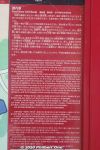
Feb 05, 2021
|
|
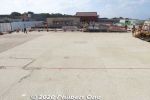
Ouchibara (御内原) as seen from Yohokoriden. Straight ahead is the Seiden Hall site.Feb 05, 2021
|
|
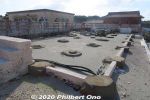
One thing that they're all saying is, "We shall rebuild it and make it EVEN BETTER than ever before."Feb 05, 2021
|
|
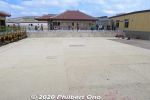
This is directly behind the Seiden, an area called the Ouchibara (御内原) which was the living quarters of the royal family and female attendants. Sleeping quarters, dining room, bath house for female attendants were here. Men, except for the royal family, were forbidden from this guarded area.Feb 05, 2021
|
|
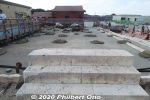
A bit of good news is that some of the key members of the team involved in the 1992 reconstruction 30+ years ago are still alive and again taking on the job to rebuild the castle.Feb 05, 2021
|
|
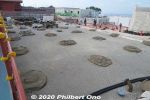
The Japanese government has declared that the castle is to be rebuilt by 2026. The reconstruction committee is now working on the building's design and blueprints. Construction will start within two years. We can be sure that they will also install a sprinkler system this time.Feb 05, 2021
|
|
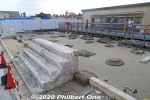
The rear of Seiden foundation, pillar foundations and rear steps.Feb 05, 2021
|
|
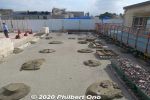
Pillar foundation stones at the rear of Seiden Hall.Feb 05, 2021
|
|
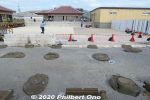
Rear pillar stones of the Seiden, looking toward the Ouchibara. The Yohokoriden is seen directly ahead.Feb 05, 2021
|
|
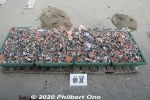
Red roof tile pieces salvaged from the fire.Feb 05, 2021
|
|
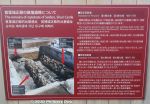
About the Seiden's old stone foundation.Feb 05, 2021
|
|
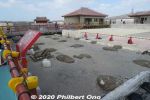
Rear part of the Seiden Hall.Feb 05, 2021
|
|
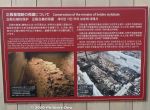
About the Seiden's old stone foundation.Feb 05, 2021
|
|
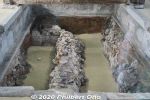
At Shuri Castle, only this foundation and two other original structures are part of the World Heritage Site "Gusuku Sites and Related Properties of the Kingdom of Ryukyu". (琉球王国のグスク及び関連遺産群). 正殿基壇の遺構Feb 05, 2021
|
|
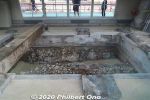
On the Seiden site, they show the Seiden's stone foundation from the 15th century. They cleaned off the charred surface from the fire. 正殿基壇の遺構Feb 05, 2021
|
|
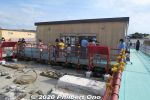
This prefab building on the Seiden site shows the Seiden's stone foundation from the 15th century. 正殿遺構を保護する覆屋Feb 05, 2021
|
|
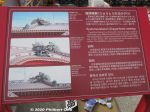
Explanation of the rooftop dragonhead ornaments. 火災前の龍頭棟飾Feb 05, 2021
|
|
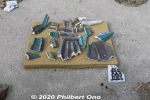
Feb 05, 2021
|
|
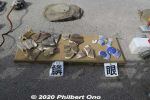
The dragon eyes, scales, etc., also on display in broken pieces. Feb 05, 2021
|
|
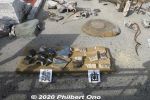
The dragon whiskers, teeth, etc., on display in broken pieces. Feb 05, 2021
|
|
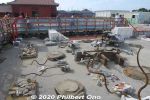
On the Seiden foundation, pillar foundation stones and an outdoor display of the remains of the rooftop dragon head sculptures. The curly-cue metal pieces were the dragon's whiskers. 龍頭棟飾 ryutomuna-kazari Feb 05, 2021
|
|
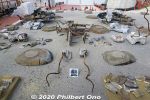
Remains of the rooftop dragon head sculptures. See the curly whiskers. 龍頭棟飾の破片Feb 05, 2021
|
|
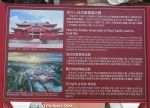
About the Seiden main hall.Feb 05, 2021
|
|
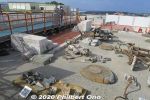
On the left side of the Seiden site, remains of the rooftop dragon head sculptures.Feb 05, 2021
|
|
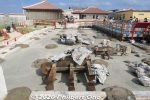
On the left side of the Seiden site, remains of rooftop dragon head sculptures are displayed.Feb 05, 2021
|
|
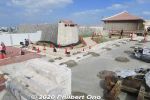
Left end of the Seiden site.Feb 05, 2021
|
|
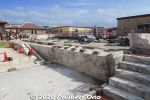
Left side of the Seiden site.Feb 05, 2021
|
|
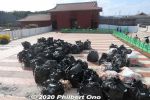
Ideal roof tiles have minimal water absorption and shrinkage. Researchers in Okinawa are testing various clay samples and firing temperatures. They found that the best clay is from the city of Nago, and that's where the clay came from for the Seiden's 1992 reconstruction. However today, there's not enough clay in Nago to make the necessary 55,000 red roof tiles for the new Seiden and other buildings.
So they scoured other locations on the island and found a good source. Now they are trying to figure out how much recycled red roof tile powder should be mixed into the new clay to make the new roof tiles. They want to somehow reuse the old roof tiles.Feb 05, 2021
|
|
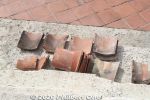
A lot of red roof tiles have been salvaged. They had volunteers painstakingly scrape off the white plaster adhering to the roof tiles. The old roof tiles cannot be reused as is.But roof tile experts are investigating ways to recycle the salvaged roof tiles. They will likely crush them into powder and mix it with new clay to make new roof tiles.Feb 05, 2021
|
|
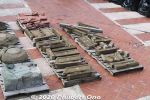
Pieces from the Seiden's stone railings.Feb 05, 2021
|
|
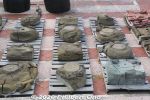
They are scouring forests in Kunigami (northern Okinawa island) for this oak and native conifer. They will likely use different varieties of wood and use local materials as much as possible. Feb 05, 2021
|
|
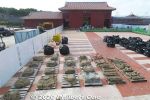
Pillar foundations. Lumber researchers are conducting strength tests on various wood samples.Although the Japanese government has stated that hinoki cypress (considered to be top-quality wood) would be used, Okinawan researchers have found that local oak wood is stronger than hinoki.Feb 05, 2021
|
|
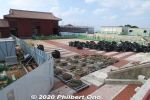
View of the Una from the Seiden site. These photos were taken in early Nov. 2020.Feb 05, 2021
|
|
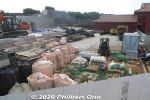
Nanden Hall's foundation, including the steps.Feb 05, 2021
|
|
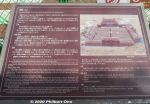
About the Una courtyard.Feb 05, 2021
|
|
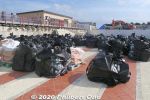
On the right was where the Nanden Hall was. It was burned beyond repair so it was torn down. The prefab building shows the ancient stone foundation underground.Feb 05, 2021
|
|
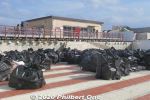
The building was only 27 years old. If you've never saw it, you missed out. The black bags contain red roof tiles salvaged from the fire.Feb 05, 2021
|
|
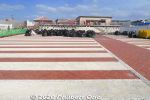
We can now only see the white stone foundation where the building once stood and some pillar foundations.The fire was detected quite early by fire alarms and security personnel, but it quickly spread. The building had no sprinkler system and firemen had difficulty reaching the building with fire hoses. The heat was also extremely intense, probably due to the lacquer paint, forcing firefighters to retreat and watch helplessly. No one was seriously hurt in the fire.Feb 05, 2021
|
|
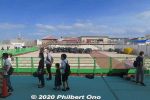
Oct. 31, 2019, the day all of Okinawa cried. Shurijo Castle's Seiden Hall was totally destroyed by fire along with connecting halls. Apparently caused by short-circuited wiring on the left side of the building.After the charred remains were cleaned up, the castle fully reopened to the public in June 2020 with this elevated walkway for visitors to see the ruins and the progress of the castle's reconstruction.Feb 05, 2021
|
|

Schedule of events for the Shuri Castle Matsuri Festival in early Nov. 2020.Feb 05, 2021
|
|
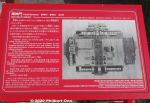
About Hoshinmon Gate. 奉神門(ほうしんもん)Feb 05, 2021
|
|
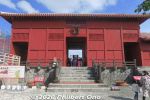
Hoshinmon Gate is the entrance to the paid area of Shuri Castle. Need to have a ticket to pass through here. 奉神門(ほうしんもん)Feb 05, 2021
|
|
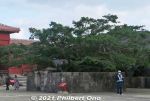
Shuri Suimui Utaki sacred site. 首里森御嶽(すいむいうたき)Feb 05, 2021
|
|
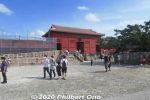
Way to Hoshinmon Gate, the entrance to the paid area of Shuri Castle. 奉神門(ほうしんもん)Feb 05, 2021
|
|

Inside Keizuza and Yomotsuza. Now a free rest place for visitors. 系図座・用物座Feb 05, 2021
|
|
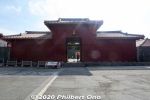
Kofukumon Gate 広福門(こうふくもん)Feb 05, 2021
|
|

Inside Keizuza and Yomotsuza. Now a free rest place for visitors. This area can also be used as a stage for performances.Feb 05, 2021
|
|
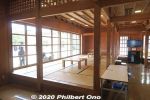
Inside Keizuza and Yomotsuza. Now a free rest place for visitors. 系図座・用物座Feb 05, 2021
|
|
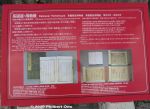
About Keizuza and Yomotsuza.Feb 05, 2021
|
|

Keizuza and Yomotsuza soon after it was rebuilt some years ago. 系図座・用物座Feb 05, 2021
|
|
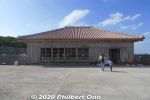
Also in the Shicha-nu Una lower courtyard is the Keizuza and Yomotsuza, now a rest house for tourists. 系図座・用物座Feb 05, 2021
|
|

Layout map of Shicha-nu Una lower courtyard. It was a waiting area for people participating in rituals and events held at the main Una courtyard. 下之御庭Feb 05, 2021
|
|
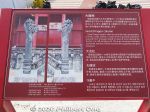
About the stone dragon pillars.Feb 05, 2021
|
|
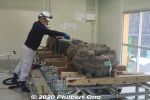
Repairing the Seiden's stone dragon pillars.Feb 05, 2021
|
|
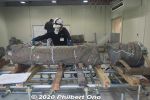
The two stone dragon pillars that survived the fire were stlll standing. However, they had cracks, so they are being repaired here. (dairyuchu 大龍柱)Feb 05, 2021
|
|
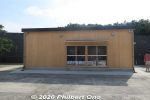
In the Shicha-nu Una is this small prefab workshop where the stone dragon pillars that stood in front of the Seiden main hall are being repaired.Feb 05, 2021
|
|
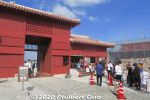
Shuri Castle ticket office at Kofukumon Gate.Feb 05, 2021
|
|
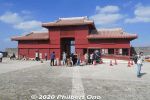
Other side of Kofukumon Gate is the Shicha-nu Una lower courtyard. This is still the free area requiring no admission fee. Kofukumon Gate is also a castle ticket office to enter the paid area. 広福門 下之御庭Feb 05, 2021
|
|

Kofukumon Gate to Shicha-nu Una courtyard. 広福門(こうふくもん)Feb 05, 2021
|
|
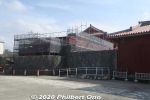
Part of Hoshinmon Gate being repaired after the fire.Feb 05, 2021
|
|

Outside Kofukumon Gate, rear view of the Hokuden Hall before the fire.Feb 05, 2021
|
|
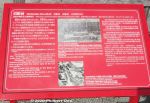
About the sundial. 日影台(にちえいだい)Feb 05, 2021
|
|
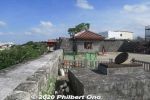
Sundial 日影台(にちえいだい)Feb 05, 2021
|
|
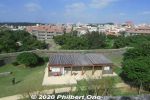
Zenikura 銭蔵Feb 05, 2021
|
|
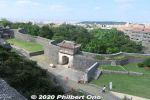
Kyukeimon Gate 久慶門(きゅうけいもん)Feb 05, 2021
|
|
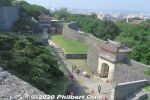
Kankaimon Gate and Kyukeimon Gate.Feb 05, 2021
|
|

Back of Roukokumon Gate. The building is not open to the public. 漏刻門(ろうこくもん)Feb 05, 2021
|
|
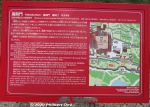
About Roukokumon Gate.Feb 05, 2021
|
|
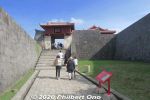
Roukokumon Gate follows Zuisenmon. 漏刻門(ろうこくもん)Feb 05, 2021
|
|
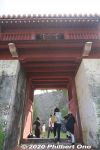
Going through Zuisenmon Gate. 瑞泉門Feb 05, 2021
|
|
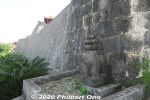
Seesaa at Zuisenmon Gate.Feb 05, 2021
|
|
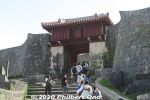
After Kankaimon is Zuisenmon Gate near a spring. Restored in 1992. 瑞泉門Feb 05, 2021
|
|
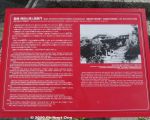
About the Ryuhi dragon spring.Feb 05, 2021
|
|
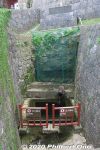
Ryuhi Spring near the gate. Water from this spring was used in the cuisine served to the royal family. 龍樋(りゅうひ)Feb 05, 2021
|
|
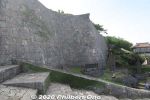
冊封七碑(さっぽうしちひ)Feb 05, 2021
|
|
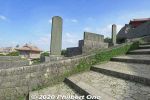
Sappo poetry monuments along the steps. 冊封七碑(さっぽうしちひ)Feb 05, 2021
|
|
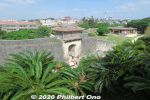
Kyukeimon GateFeb 05, 2021
|
|
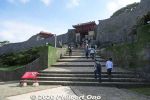
Steps to Zuisenmon Gate lined with monuments on both sides. 瑞泉門Feb 05, 2021
|
|
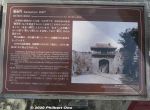
About Kankaimon Gate.Feb 05, 2021
|
|
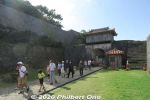
Other side of Kankaimon Gate.Feb 05, 2021
|
|
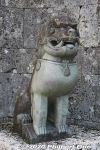
Seesaa at Kankaimon Gate.Feb 05, 2021
|
|
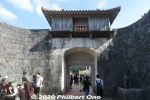
Kankaimon Gate is the first gate you enter when you enter the castle's inner grounds. "Kankai" means to "greet with joy." Rebuilt in 1974. 歓会門Feb 05, 2021
|
|
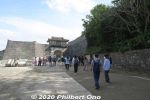
Kankaimon Gate, main entrance to the castle for tourists. 歓会門Feb 05, 2021
|
|
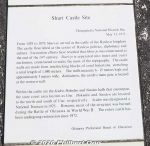
About Shuri Castle.Feb 05, 2021
|
|
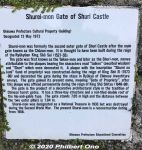
About Shureimon Gate.Feb 05, 2021
|
|

During World War II, the Japanese Army's HQ was in underground bunkers under Shuri Castle. One entrance was right near Shureimon Gate.Feb 05, 2021
|
|
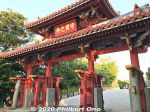
Shuri Castle's Shureimon Gate 守礼門 also appeared on the defunct ¥2000 bill.Feb 05, 2021
|
|
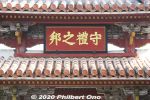
"Shurei no Kuni"Feb 05, 2021
|
|
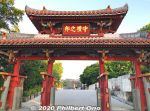
The reconstruction of Shureimon was the start of a decades-long process to reconstruct the major buildings of the castle, especially the ornate Seiden main hall in 1992. Other castle buildings were also reconstructed and the castle's reconstruction was finally completed in spring 2019. It was a great celebration.Feb 05, 2021
|
|
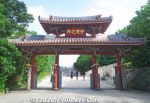
Shureimon Gate (守礼門), one of the castle's main gates. This gate was reconstructed in 1958 since most castle structures got destroyed during World War II. Feb 05, 2021
|
|

When you walk toward Kankaimon Gate to enter Shuri Castle, you'll see Shureimon Gate right across. However, this is the back side, so go through the gate and see it from the front side.Feb 05, 2021
|
|

Sonohyan-Utaki Ishimon is a World Heritage Site. 園比屋武御嶽石門(そのひゃんうたきいしもん)Feb 05, 2021
|
|
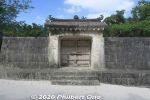
Sonohyan-Utaki Ishimon, place of worship. 園比屋武御嶽石門(そのひゃんうたきいしもん)Feb 05, 2021
|
|
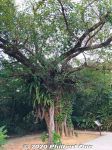
Tree that miraculously survived World War II. Since the Japanese Army HQ was under Shuri Castle, the castle was heavily attacked and most buildings destroyed in the process.Feb 05, 2021
|
|
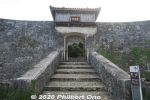
Kyukeimon Gate, service gate mainly for women. 久慶門(きゅうけいもん)Feb 05, 2021
|
|
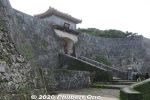
Kyukeimon Gate, service gate mainly for women. 久慶門(きゅうけいもん)Feb 05, 2021
|
|
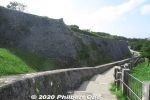
Pleasant walk along the castle wall.Feb 05, 2021
|
|
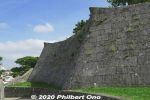
Shuri Castle wall with pointy tips.Feb 05, 2021
|
|
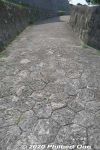
Honeycomb pattern on the path.Feb 05, 2021
|
|
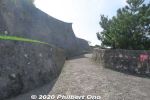
Way to Shuri Castle's main entrance.Feb 05, 2021
|
|
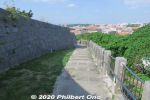
Nice long path along the castle wall leading to the entrance of Shuri Castle.Feb 05, 2021
|
|
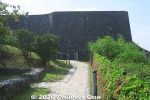
At the castle wall, go right and walk along the stone wall.Feb 05, 2021
|
|
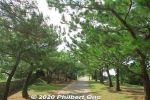
Ryukyu pine trees on the way to Shuri Castle.Feb 05, 2021
|
|
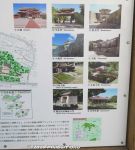
Major structures at Shuri Castle. The Seiden main hall was sadly destroyed by an electrical fire in Oct. 2019. I visited in Nov. 2020, a year after the fire. The castle grounds were closed afterthe fire, but it gradually opened up.The remains of the Seiden can be toured.Feb 05, 2021
|
|
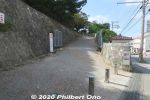
After walking from Shuri Station, this is the where you start walking up the hill toward Shuri Castle. Gradual slope, no problem for most people.Feb 05, 2021
|
|
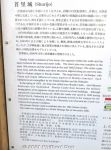
Shuri Castle has a free area which is like a castle park where you can enter for free. There is also a paid area where a small admission is charged to see the main buildings..Feb 05, 2021
|
|
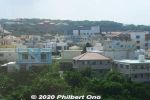
Shuri Castle is Naha's top tourist attraction. The home of kings who ruled the Ryukyu Kingdom from 1429 to 1879 before it was annexed by Japan and renamed Okinawa Prefecture. Shuri Castle was the kingdom's capital.Photo shows Shurijo on a hill as seen from Shuri Station on the Yui Rail. The castle grounds extend about 400 meters long and 200 meters wide. This hill is about 130 meters high.Feb 05, 2021
|
|
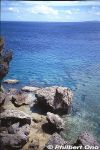
Jan 13, 2021
|
|
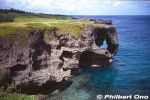
Cape Manzamo, one of Okinawa Island's main tourist attractions. Rock formation with a hole or elephant's trunk. It faces the East China Sea. 万座毛Jan 13, 2021
|
|

Cape Manzamo elephant trunk (rock).Jan 13, 2021
|
|
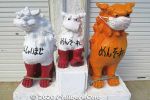
Near the Himeyuri site, Seesa lions with masks.Jan 09, 2021
|
|
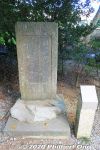
Poetry by Ii Fumiko (1917–2004 井伊文子) who was a great granddaughter of the last Ryukyu King, Sho Tai. She was married to the mayor of Hikone, Shiga Prefecture who was a descendant of the Ii Clan.井伊文子の歌碑Jan 09, 2021
|
|
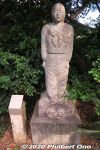
Statue of a Himeyuri high school student nurse.Jan 09, 2021
|
|
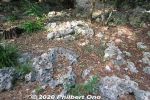
Himeyuri Cenotaph site is very rocky.Jan 09, 2021
|
|
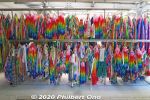
Origami at Himeyuri Cenotaph site.Jan 09, 2021
|
|
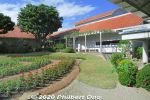
Himeyuri Peace Museum courtyard.Jan 09, 2021
|
|
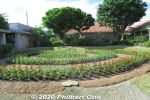
Himeyuri Peace Museum courtyard.Jan 09, 2021
|
|
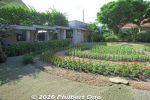
Himeyuri Peace Museum courtyard.Jan 09, 2021
|
|
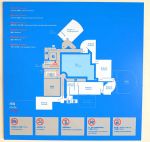
Himeyuri Peace Museum layout. Photography not allowed inside the museum.Jan 09, 2021
|
|
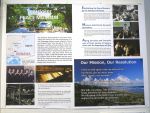
About the Himeyuri Peace Museum. It opened in June 1989.Jan 09, 2021
|
|
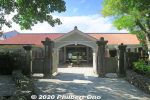
Near the Himeyuri Cenotaph is the Himeyuri Peace Museum. The building was modeled after one of the Himeyuri schools. ひめゆり平和祈念資料館http://www.himeyuri.or.jp/EN/info.htmlJan 09, 2021
|
|
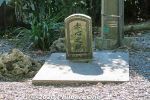
Sekishin Cenotaph 赤心之塔Jan 09, 2021
|
|
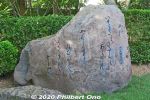
Iwa-makura Monument has a tanka poem by Nakasone Seizen who was one of the teachers of the Himeyuri students. いわまくら碑Jan 09, 2021
|
|

About the Himeyuri Cenotaph in English.Jan 09, 2021
|
|
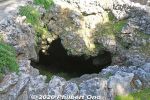
The cave goes down deep by 14 meters. They used a ladder for access.Jan 09, 2021
|
|

Below the Himeyuri monument, this cave is one of numerous natural caves in this area where the student nurses and local people took shelter. Jan 09, 2021
|
|
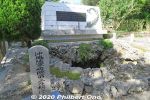
The white Himeyuri Cenotaph was renovated in 2009.Jan 09, 2021
|
|
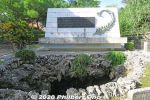
Himeyuri Cenotaph (white). The white monument is more recent, also inscribed with an updated list of names of the deceased student nurses and stores their remains in the back.Jan 09, 2021
|
|
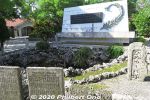
Himeyuri Cenotaph (white) and older monuments. Seen on the left is the Himeyuri Peace Museum. 第三外科壕Jan 09, 2021
|
|
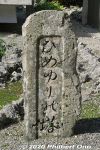
Original Himeyuri Cenotaph monument built here in 1946.Jan 09, 2021
|
|
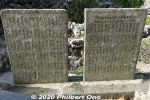
The two monuments were also placed here in 1946 inscribed with the names of the deceased student nurses.Himeyuri student nurses were Okinawan high school conscripts trained by the Japanese Army to serve at the Army Field Hospital which was a muddy and filthy underground bunker in a place called Haebaru from late March 1945. The hospital was slightly north of this area. As US forces advanced south, the hospital and nurses evacuated south to this area. Patients who couldn't walk overnight to evacuate were left behind.Jan 09, 2021
|
|
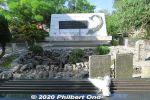
Himeyuri Cenotaph (white) built in 1957 and older monuments. The small stone monument on the right is the original Himeyuri Monument that was placed here in 1946. ひめゆりの塔This monument stands over the entrance of the cave where 80 people died on June 19, 1945 when US troops searching for Japanese soldiers threw in white phosphorus grenades. It's like a smoke bomb that suffocates people. Those who died included 38 Himeyuri high school student nurses and four of their teachers. US troops didn't know who were in the caves.Jan 09, 2021
|
|
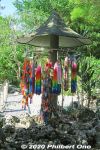
Origami displayJan 09, 2021
|
|
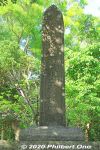
Monument for medical staff who died in the Battle of Okinawa.Jan 09, 2021
|
|
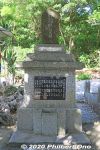
Monument for the Army Field Hospital's Third Surgical Staff. Jan 09, 2021
|
|

Monument for the medical staff who died in the Battle of Okinawa. Jan 09, 2021
|
|
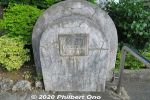
Monument for the land donation.Jan 09, 2021
|
|

Harry Shinichi Gima worked as an engineer on a US military base in Okinawa and visited Himeyuri Monument in 1951. He wanted the story and place to be presented more properly, so he quietly donated the money to the Himeyuri Alumini Association to buy the land.
This area was originally just a grassy area. None of the asphalt or cement we see here today. The land was privately owned.Jan 09, 2021
|
|

Monument for Harry Shinichi Gima (儀間真一), an Okinawan-American nisei from Hawaii who donated money to buy the land here to build the Himeyuri memorials and museum. His parents immigrated to Hawaii from Yomitan.Jan 09, 2021
|
|
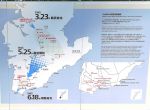
The war's progression.Jan 09, 2021
|
|
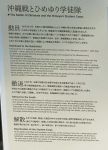
About the Himeyuri-no-Tou monuments.Jan 09, 2021
|
|
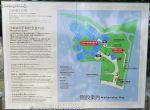
Map of Himeyuri Monument site.Jan 09, 2021
|
|
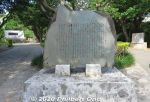
Himeyuri Chronology, inscribed with what happened here.Jan 09, 2021
|
|
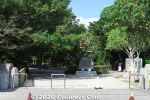
Himeyuri Monument and Cenotaph is one of Okinawa's most famous war sites and memorials.Jan 09, 2021
|
|
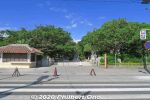
Entrance to Himeyuri Monument and Cenotaph (ひめゆり慰霊碑) in southern Okinawa in the city of Itoman. Building on the left is a flower vendor (closed).Jan 09, 2021
|
|
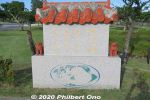
"Life is a Treasure..."Jan 09, 2021
|
|
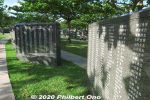
Jan 09, 2021
|
|
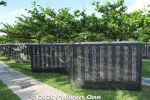
Jan 09, 2021
|
|
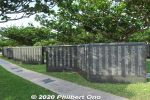
Jan 09, 2021
|
|
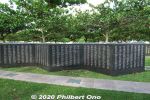
Jan 09, 2021
|
|
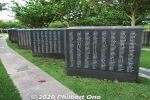
Jan 09, 2021
|
|
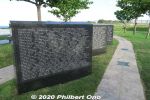
Slabs for 14,000+ Americans who died in Okinawa.Jan 09, 2021
|
|
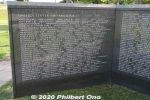
Names of 14,000+ Americans who died in Okinawa.Jan 09, 2021
|
|
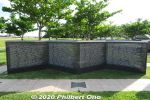
Names of 14,000+ Americans who died in Okinawa.Jan 09, 2021
|
|
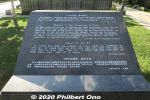
About the Cornerstone of Peace.Jan 09, 2021
|
|
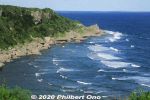
Mabuni CliffJan 09, 2021
|
|
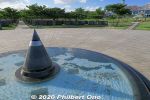
Flame of Peace in the world map. Japan can be seen in the map. 平和の火 Jan 09, 2021
|
|
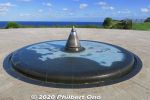
Flame of Peace in the world map. 平和の火Jan 09, 2021
|
|

Flame of Peace at the center of the Peace Plaza on the oceanfront. 平和の火Jan 09, 2021
|
|
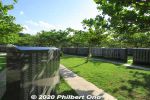
Jan 09, 2021
|
|
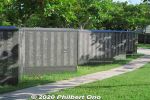
Jan 09, 2021
|
|
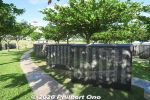
Jan 09, 2021
|
|
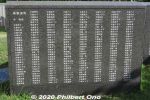
Jan 09, 2021
|
|
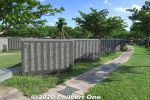
Jan 09, 2021
|
|
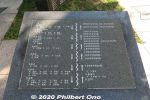
Map of where people's names are inscribed. Okinawans are inscribed according to their hometowns. Nearby are also war memorials for each prefecture.Jan 09, 2021
|
|
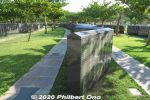
Stone slabs are like folding screens in a slight zig-zag pattern.Jan 09, 2021
|
|
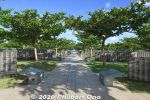
Japanese victims are inscribed by prefecture. Foreign nationals are inscribed by country.Jan 09, 2021
|
|
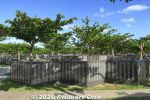
Stone slabs inscribed with over 240,000 names of people who died in the battle. Civilians and military, Japanese and foreign.Jan 09, 2021
|
|
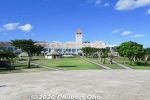
Okinawa Prefectural Peace Memorial Museum (沖縄県平和祈念資料館)Jan 09, 2021
|
|
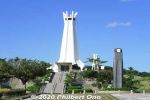
Peace Prayer Memorial Hall in the Okinawa Prefectural Peace Park.Jan 09, 2021
|
|
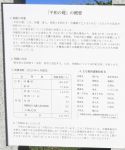
About the Cornerstone of Peace. http://www.peace-museum.pref.okinawa.jp/Jan 09, 2021
|
|
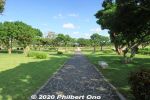
Walking to the Cornerstone of Peace.Jan 09, 2021
|
|
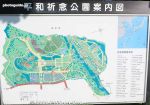
Map of Cornerstone of Peace witin the Okinawa Peace Prayer Park.Jan 09, 2021
|
|
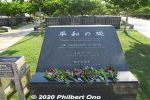
Cornerstone of Peace (平和の礎) in Mabuni, a large oceanfront memorial park full of these stone slabs inscribed with over 240,000 names of people who died in the battle. Jan 09, 2021
|
|

ANA InterContinental Manza Beach Resort as seen from Manzamo. Jan 09, 2021
|
|

Jan 09, 2021
|
|

View from Manzamo.Jan 09, 2021
|
|
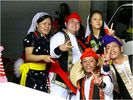
For their parting shot, these Eisa dancers couldn’t resist flashing the Peace sign along with their smiles for the camera. Photo copyright 2009 Michael Lynch.Jun 15, 2009
|
|
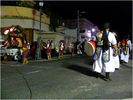
Different color yukata and uniforms of the dancers are worn, depending on which district or village they represent.Photo copyright 2009 Michael Lynch.Jun 15, 2009
|
|
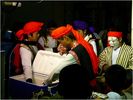
Here a group of men reach into a cooler for some refreshments while on a quick break from dancing. They will pile on trucks and move to the next location, performing Eisa dances well past midnight at every street, in every village for miles around.Photo copyright 2009 Michael Lynch.Jun 15, 2009
|
|

The large banner or flag carried on a bamboo pole is known as Hatagashisa and also represents a village or district. Each has their own unique design and the team takes pride in displaying it as a symbol of strength and prosperity for their hometown.Photo copyright 2009 Michael Lynch.Jun 15, 2009
|
|
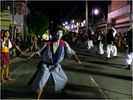
Here the Buffoon (called Gajangani) can be seen going in the opposite direction of all the other male dancers and waving a banana leaf. Some clowns carry bottles of sake and try to get bystanders to drink with them.Photo copyright 2009 Michael Lynch.Jun 15, 2009
|
|
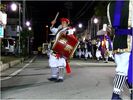
The large drum used for marching is slightly smaller than a Taiko and is called an Odaiko drum. The drummer in this photo is the only female player of this team to play such a large drum and she smiles and beats it enthusiastically.Photo copyright 2009 Michael Lynch.Jun 15, 2009
|
|
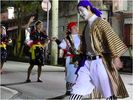
The brown and beige garment worn by this Buffoon is hand woven clothing called Bashofu. It is made from the fiber of banana plants. There may be two or three of these characters with each Eisa group skipping and weaving through the dancers as if they...The brown and beige garment worn by this Buffoon is hand woven clothing called Bashofu. It is made from the fiber of banana plants. There may be two or three of these characters with each Eisa group skipping and weaving through the dancers as if they weren’t there. Photo copyright 2009 Michael Lynch.Jun 15, 2009
|
|
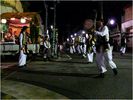
Each team of Eisa dancers has its own band riding in the back of a straw roof-covered truck. Sanshin (3 stringed instrument) players sing and play Okinawan folk music accompanied by CD’s blasted over a loudspeaker system. Photo copyright 2009 Michael Lynch.Jun 15, 2009
|
|
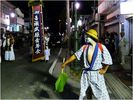
The Buffoon, Clown, or Town Drunk is a man who zig-zags through the line of dancers to the beat of his own drum, entertaining everyone and chasing evil spirits away.Photo copyright 2009 Michael Lynch.Jun 15, 2009
|
|
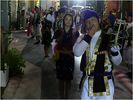
During each brief pause in the Eisa music, the men make a loud whistling noise that is distinctly Okinawan. All photos copyright 2009 Michael Lynch.Photo copyright 2009 Michael Lynch.Jun 15, 2009
|
|
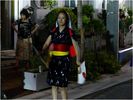
Eisa dancing is performed on the streets at night in every village on Okinawa during the three days of Obon, late in August. Here a young lady dressed in traditional Okinawan yukata (an informal kimono) marches while waving Rising Sun paper fans.Photo copyright 2009 Michael Lynch.Jun 15, 2009
|
|
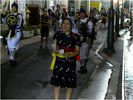
The Eisa dancers are all unmarried men and women between 20 and 30 years of age. The small handheld drums, known as Panraku, have the traditional symbol of Okinawa painted in gold on them.Photo copyright 2009 Michael Lynch.Jun 15, 2009
|
|
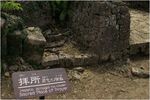
Utaki. A closeup view of a place of worship. Incense is sometimes burned and coins placed in the stone container centered within the utaki stone walls. Photo copyright 2009 Michael Lynch.May 01, 2009
|
|
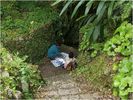
Sacred Well. There are three spring-fed wells within the castle. This one is located in the West enclosure and is also a sacred site where people make ritual offerings. Photo copyright 2009 Michael Lynch.The woman on the left gave consent to take a photo after helping her down the rough, stone stairs.May 01, 2009
|
|

Three Sacred Sites. The South enclosure contains three Utaki (sacred sites), all within a small area, as seen by the signs in this picture. Many Okinawans come to worship at these Utaki and make offerings. Photo copyright 2009 Michael Lynch.From the high ground to the left of this scene, you may be able to see Kudaka-Jima, where locals believe the first Okinawans originated. May 01, 2009
|
|
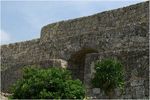
Second Enclosure. A view of the archway and stone construction from inside the 2nd enclosure, looking East. Photo copyright 2009 Michael Lynch.May 01, 2009
|
|
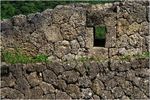
Gun Port. At several locations along the North walls of the castle, gun ports may be seen, where sentries could repel invaders. Photo copyright 2009 Michael Lynch.Many visitors are surprised to learn that firearms were in existence in the 14th century.May 01, 2009
|
|
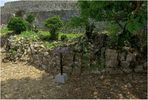
Sacred Site. There are eight special places of worship (Utaki) located within the castle walls. This view looks toward the East from the inside of the 1st enclosure. Photo copyright 2009 Michael Lynch.May 01, 2009
|
|
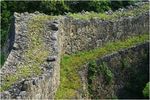
Terraced Walls. A view looking from north to south standing at an elevated point along the inner castle walls. Photo copyright 2009 Michael Lynch.May 01, 2009
|
|
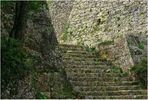
Stone Stairs. They lead to the 2nd enclosure. Visitors should wear sturdy walking shoes, as the stone-lined pathways and stairs can be very difficult to walk on without twisting an ankle. Photo copyright 2009 Michael Lynch.May 01, 2009
|
|
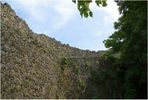
A view from the base of the West enclosure. Constructed in mid-fourteenth century of limestone rocks, placed without the use of mortar, Commodore Perry praised the construction technique on his visit to Okinawa in 1853. Photo copyright 2009 Michael Lynch.May 01, 2009
|
|

World Heritage Marker. Photo copyright 2009 Michael Lynch.May 01, 2009
|
|
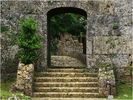
Rear Gate. Most visitors will enter through this gate to the castle, as it is closest to the parking and ticket sales. Photo copyright 2009 Michael Lynch.May 01, 2009
|
|
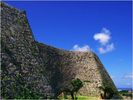
Nakagusuku Castle is part of a World Heritage Site of Okinawan gusuku castles. This is a view looking eastward from the base of the 3d enclosure (migusuku). Photos in this album all by Michael Lynch. Constructed in mid-fourteenth century of limestone rocks, placed without the use of mortar, Commodore Perry praised the construction technique on his visit to Okinawa in 1853. May 01, 2009
|
|

Pickled vegetables.May 01, 2009
|
|
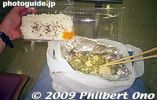
My take-out dinner at Naha Airport before the flight back to Tokyo. Goya-champuru and rice. May 01, 2009
|
|
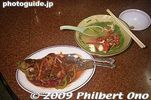
My lunch.May 01, 2009
|
|

She's selling goya (bitter melon) juice. I tried it.May 01, 2009
|
|

Colorful fish in the old Makishi Public Market where you could pick the fish to be cooked for your meal.May 01, 2009
|
|
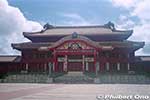
The ornate Seiden Hall, Shuri Castle's most important and central building and National Treasure. Saw it on a previous trip. Very ornate building with wood carvings, lacquered surfaces, paintings, and sculptures. It was meticulously rebuilt in 1992. (首里城 正殿)
Notice the stone dragon pillars flanking the center entrance and sculptures of dragon heads and lion head on the red roof tile roof.May 01, 2009
|
|

Hoshinmon Gate and the Una as seen from the Seiden.This red-and-white plaza is the castle's trademark, the Una courtyard where official ceremonies were held. The red path in the middle was where the King would walk to the main hall.May 01, 2009
|
|
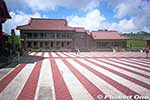
Before the fire, Nanden South Hall (南殿) was connected to the Seiden main hall seen on the left. To enter the Seiden, we had to enter this hall first (entrance on the right). The fire also gutted this building beyond repair and had to be torn down along with the Hokuden North Hall (北殿) on the other side of the Seiden.
Photography inside the main buildings wasn't allowed, so sadly I don't have any photos of the interior.May 01, 2009
|
|

The good old days when Boeing 747s still flew into Naha Airport.May 01, 2009
|
|
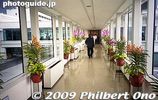
The flowers in the jet bridge is a very nice touch at Naha Airport.May 01, 2009
|
|
| 980 files on 4 page(s) |
 |
4 |
|